Enter the minterm expression
Separate the terms with a space( ) or plus(+)
Use ' for inverse
Eg: ab'c + ab'c'
ab ac'
a + b + ac'
Canonical Expression:
a'bc' + a'bc + ab'c' + ab'c + abc' + abc
KMap:
+----+------+------+------+------+
| \ | b'c' | b'c | b c | b c' |
+----+------+------+------+------+
| a' | | | 1 | 1 |
| a | 1 | 1 | 1 | 1 |
+----+------+------+------+------+Finite Automata to Digital Circuit Synthesizer
Members
1902085 Dheeraj Lalwani
1902086 Chirag Lulla
1902168 Kartik Soneji
1902184 Aayush Wadhwani
Group Number: 24
Guide: Prof. Sakshi Surve
Introduction
Finite Automata are fundamental concepts in Automata Theory and Digital Logic Design.
These FA can be converted into a circuit.
Given an FA transition table as input, this project aims to generate the equivalent transition logic with primitive/basic gates/components.
Literature Review
CircuitVerse
JFLAP
CircuitVerse
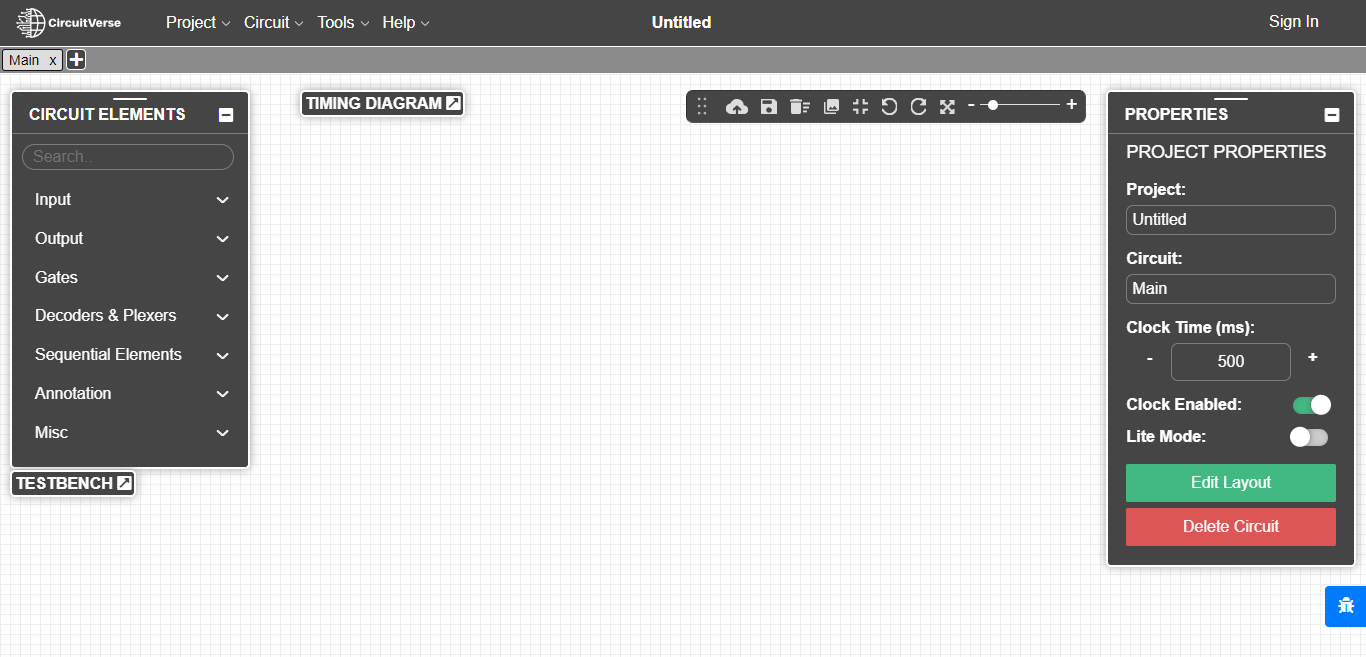
Limitations
Does not support simulation of Automata
Supports circuit simulation but not conversion from FA
JFLAP
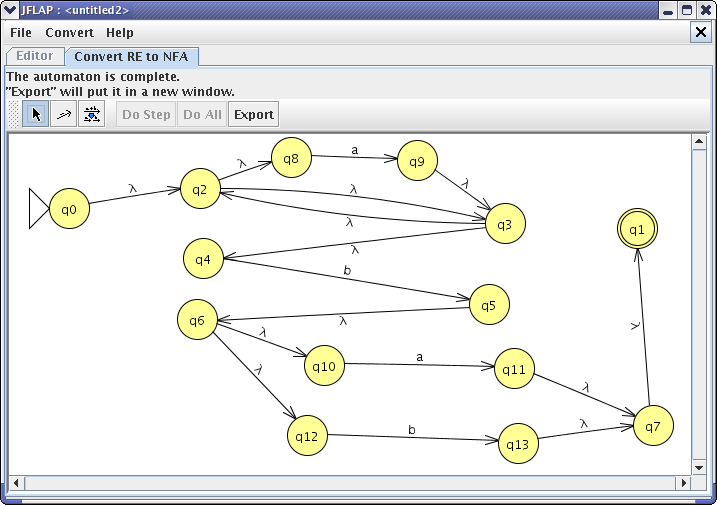
Limitations
Has to be run locally with Java
Users cannot share designed automata easily
Methodology
Determine what states / transitions are needed in order to solve the problem.
Draw the state diagram, labelling the states and the edges.
Finite Automata

Develop a mapping between state and representation in FFs.
Write out the state transition table.
Transition Table
| State | button not pushed (0) | button pushed (1) |
|---|---|---|
|
|
|
|
|
|
|
|
|
|
|
|
Based on the Activation table of the flip-flops used, construct the truth table from the transition table.
Based on the truth table, construct the equation for each output variable.
Truth Table
Present State | Button Input | Next State | Output | ||
|
|
|
| ||
0 | 0 | 0 | 0 | 0 | 0 |
0 | 0 | 1 | 0 | 1 | 0 |
0 | 1 | 0 | 1 | 0 | 1 |
0 | 1 | 1 | 0 | 1 | 1 |
1 | 0 | 0 | 1 | 0 | 1 |
1 | 0 | 1 | 1 | 1 | 1 |
1 | 1 | 0 | 0 | 0 | 0 |
1 | 1 | 1 | 1 | 1 | 0 |
Reduce the expressions using the suitable algorithm (K-Maps / Quine-McClusky algorithm)
Convert the expressions to a circuit diagram using logic gates.
Circuit
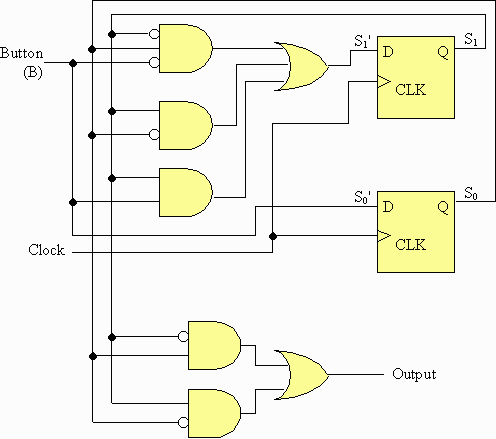
Application of our project
Finite Automata can be used to break down a circuit’s function into a collection of states and rules which determine when the system moves from one state to another state. The state diagram consists of nodes which represent the states and arrows (sometimes called edges) which give the possible transitions between states.
Work done so far
1) Implement KMaps for expression reduction
Truth Table:
+-----+---+
| abc | |
+-----+---+
| 000 | 0 |
| 001 | 0 |
| 010 | 1 |
| 011 | 1 |
| 100 | 1 |
| 101 | 1 |
| 110 | 1 |
| 111 | 1 |
+-----+---+
Minimized expression:
a + b2) Verification Of Finite Automata
npx ts-node test.js
>> DFA error: state A defines more transition for input 1: B, A
>> DFA error: state B does not define a transition for input 1
>> null (No error in FA)3) Generation of State Transition Table
npx ts-node test.js
>> -------------------------------------
| State/Input | 0 | 1 |
-------------------------------------
| A/0 | A | B |
-------------------------------------
| B/1 | C | B |
-------------------------------------
| C/1 | C | D |
-------------------------------------
| D/0 | A | D |
-------------------------------------4) Generation of Truth Table
npx ts-node test.js
>> -------------------------------------------
|b1 b0 i b1 b0 O|
-------------------------------------------
|0 0 0 0 0 0|
-------------------------------------------
|0 0 1 0 1 0|
-------------------------------------------
|0 1 0 1 0 1|
-------------------------------------------
|0 1 1 0 1 1|
-------------------------------------------
|1 0 0 1 0 1|
-------------------------------------------
|1 0 1 1 1 1|
-------------------------------------------
|1 1 0 0 0 0|
-------------------------------------------
|1 1 1 1 1 0|
-------------------------------------------5) Generation of minterm expressions
npx ts-node test.js
>> b1 = b1'.b0.i' + b1.b0'.i' + b1.b0'.i + b1.b0.i
>> b0 = b1'.b0'.i + b1'.b0.i + b1.b0'.i + b1.b0.i
>> i = b1'.b0.i' + b1'.b0.i + b1.b0'.i' + b1.b0'.iWe first used KMaps to reduce our expression, which uses a k-map table to create the minimized expression, it’s a tabular method to get the expression and hard to implement it in code.
The KMap algorithm has some severe disadvantages:
KMap is a NP Hard problem i.e. the time complexity to get the min expression increases exponentially with increase in number of inputs.
There is no guarantee that the expression obtained after the process will be the minimum one.
So we shifted to the Quine-McCluskey Algorithm.
6) Reduction of minterm expressions using Quine-McCluskey reduction technique
npx ts-node quineMcClusky.js
>> b1 = b1'.b0.i' + b1.b0' + b1.i
>> b0 = o
>> i = b1'.b0 + b1.b0'Results
The Finite Automata
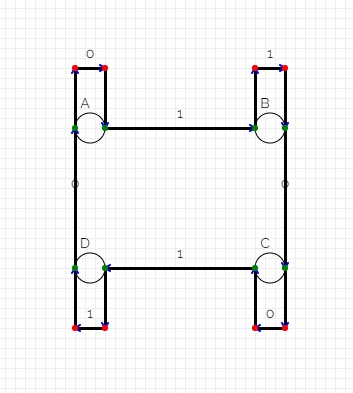
The Circuit
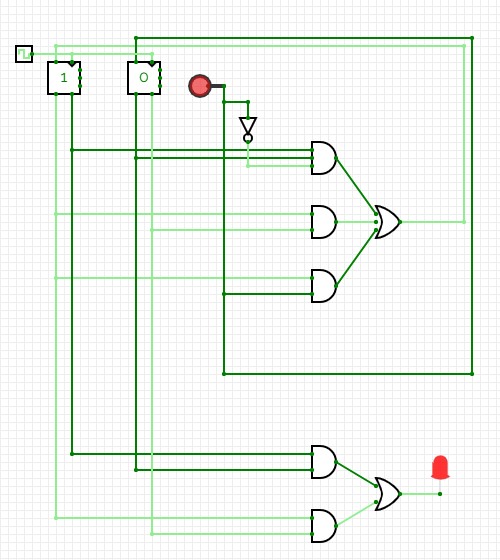
The Finite Automata

The Circuit

The Circuit

The Finite Automata

The Circuit

The Circuit
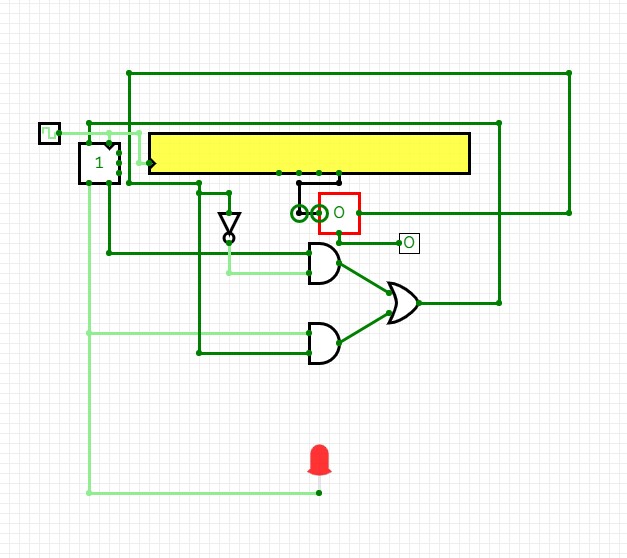
Steps completed
Determine what states / transitions are needed in order to solve the problem.
Draw the state diagram, labelling the states and the edges.
Develop a mapping between state and representation in FFs.
Write out the state transition table.
Based on the Activation table of the flip-flops used, construct the truth table from the transition table.
Based on the truth table, construct the equation for each output variable.
Reduce the expressions using the suitable algorithm (K-Maps / Quine-McClusky algorithm)
Convert the expressions to a circuit diagram using logic gates.
Future Scope
Add support for NFA
Add support for other types of Automata like Pushdown Automata and Turing Machine.
Extend the algorithm to choose from the variety of flip flops
Technologies
JavaScript
TypeScript
References
JFlap www.jflap.org
CircuitVerse circuitverse.org
Kodwani, Rajurkar, Mundada(2017). Realization of Sequential Circuit using Finite state Machine